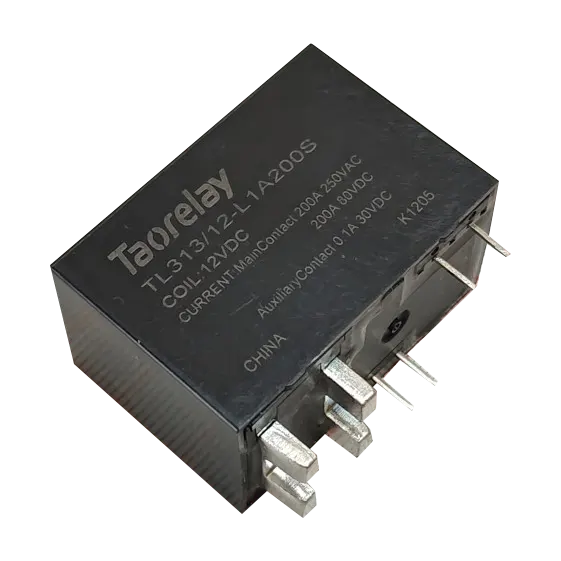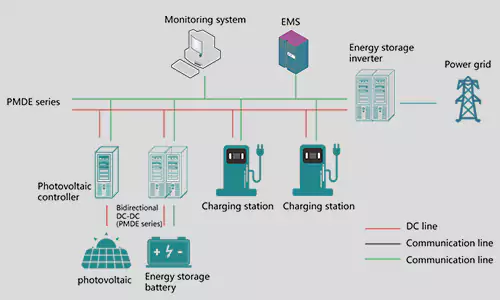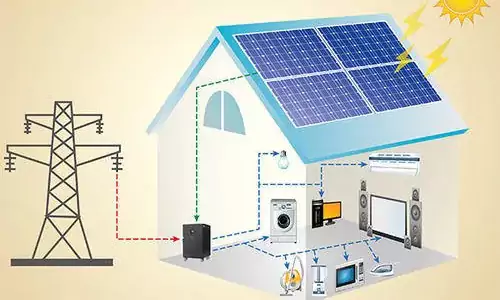Introduction to High Voltage DC Relays
High voltage DC relays play a pivotal role in the operation of electric vehicles (EVs), serving as essential components in the management and distribution of electrical power. These relays are specifically designed to handle direct currents at elevated voltage levels, which are commonplace in modern electric vehicles due to their reliance on high-capacity batteries. In essence, a relay functions as an electromechanical switch that controls the flow of electricity within a circuit. When a certain voltage level is reached, the relay activates, allowing current to flow through the connected devices or systems.
In the context of electric vehicles, the significance of high voltage cannot be overstated. The electrical systems in EVs typically operate at voltages between 200 to 800 volts. Such levels are necessary for efficiently transferring energy from the vehicle’s battery to various components, including the electric motor, onboard electronics, and auxiliary systems. High voltage DC relays are crucial for ensuring safe and reliable management of this power distribution, as they can isolate different parts of the system when necessary, enhancing safety and functionality.
The role of high voltage DC relays extends beyond merely oscillating power; they also provide essential protective functions. These components can detect faults and manage power flow to prevent damage to sensitive equipment or safety hazards. When an abnormal condition is identified, the relay can disconnect power from the affected system, ensuring the overall integrity of the vehicle’s electrical architecture. Thus, understanding the functionality and importance of high voltage DC relays is vital, as they are integral to the safe operation, performance, and reliability of electric vehicles.
Key Technical Specifications
The implementation of high voltage DC relays in electric vehicles (EVs) requires careful consideration of several critical technical specifications. These specifications ensure the reliability and efficiency of the EV’s electrical system. One of the primary parameters to consider is the voltage and current ratings, which dictate the relay’s ability to handle the high voltages and currents typical in EV applications. Relays must be rated for the nominal voltage of the system, often exceeding 400 volts in modern EVs, along with sufficient current capacities to manage the peak loads during operation.
Equally important is the insulation resistance of the relay. A high level of insulation resistance is vital to prevent electrical leakage that can lead to failures or safety hazards in high voltage systems. Typically, insulation resistance values should be in the range of megaohms, ensuring that the relay can effectively isolate the high voltage from the vehicle’s structure, minimizing the risk of electrical shock or short circuits.
Thermal management capabilities represent another key specification. High voltage DC relays generate heat during operation, especially under heavy load conditions. Effective thermal management solutions, such as heat sinks or appropriate materials, are necessary to dissipate heat efficiently, ensuring that the relay operates within safe temperature limits. This consideration helps maintain the longevity and performance of the relay.
Lastly, switching frequency is an essential specification to factor into the design. The ability to switch efficiently at higher frequencies can lead to better vehicle performance in applications such as regenerative braking and energy distribution. An optimal switching frequency minimizes energy losses and enhances the overall efficiency of the electric vehicle’s power conversion systems.
These technical specifications collectively play a crucial role in driving the reliability and efficiency of high voltage DC relays in electric vehicles, ensuring that they perform effectively in various operational scenarios.
Durability and Environmental Considerations
High voltage DC relays play an essential role in the operation of electric vehicles (EVs), requiring a high degree of durability to withstand the challenging conditions present in automotive environments. One of the primary challenges faced by these relays is vibration resistance. EVs are often subject to diverse road surfaces, which can lead to significant mechanical stress. Therefore, high voltage DC relays must be designed to endure continuous vibration without compromising functionality. This durability ensures reliable performance and minimizes maintenance concerns in the long term.
Another vital factor influencing the durability of high voltage DC relays is temperature range. Electric vehicles operate in a variety of climates, from extreme heat to freezing cold. Consequently, it is imperative that these relays maintain electro-mechanical performance over an extensive temperature range. Manufacturers often specify operational and storage temperature limits to ensure reliability, which is crucial for optimizing the lifespan of the relays.
Corrosive environments also pose a significant threat to the longevity of high voltage DC relays. Electric vehicles are exposed to various elements such as moisture, road salts, and other corrosive substances. To enhance the durability of relays, manufacturers often employ protective coatings or use materials resistant to corrosion. This proactive approach reduces the risk of deterioration and failure, thereby ensuring the relays continue to function effectively throughout the vehicle’s lifecycle.
Moreover, the impact of these factors—vibration, temperature, and exposure to corrosive elements—on the longevity and maintenance of relays cannot be overstated. A high level of durability in high voltage DC relays leads to a reduction in service interruptions, lower replacement costs, and enhanced vehicle performance. Addressing these environmental considerations is vital for manufacturers aiming to develop robust and efficient relays that can withstand the demanding operating conditions of electric vehicles.
Safety Standards and Regulatory Compliance
In the electric vehicle industry, the implementation of high voltage direct current (DC) relays is critically governed by a framework of safety standards and regulatory requirements. These standards are instrumental in ensuring not only the safety of the vehicle systems but also the reliability and efficiency of their performance. Major international standards such as the International Electrotechnical Commission (IEC) and Underwriters Laboratories (UL) play prominent roles in establishing the benchmarks that high voltage DC relays must meet.
The IEC publishes a series of standards, such as IEC 61800, which pertains to adjustable speed electrical power drive systems. Additionally, the IEC 62955 standard specifically addresses DC relay requirements, emphasizing the need for components to withstand various electrical and environmental stressors. Similarly, UL standards ensure that high voltage DC relays are designed to avoid hazards like electrical shock, fire, and mechanical failures. Compliance with these standards is not optional; manufacturers must ensure that their products are tested and certified accordingly to guarantee acceptance in varying regions.
Certification of components like DC relays engenders a level of trust and quality assurance for manufacturers, suppliers, and consumers alike. By adhering to these regulatory requirements, manufacturers are not just fulfilling legal obligations but also enhancing the safety profile of electric vehicles. It provides a canvas for the development of advanced technologies without compromising on safety norms.
In the context of high voltage systems, adhering to safety regulations extends beyond mere compliance; it fosters innovation, spurring the advancement of electric vehicle technologies that highlight safety, performance, and efficiency as paramount principles. For stakeholders in the electric vehicle sector, understanding and implementing these requirements are crucial for staying relevant in an increasingly competitive market.








